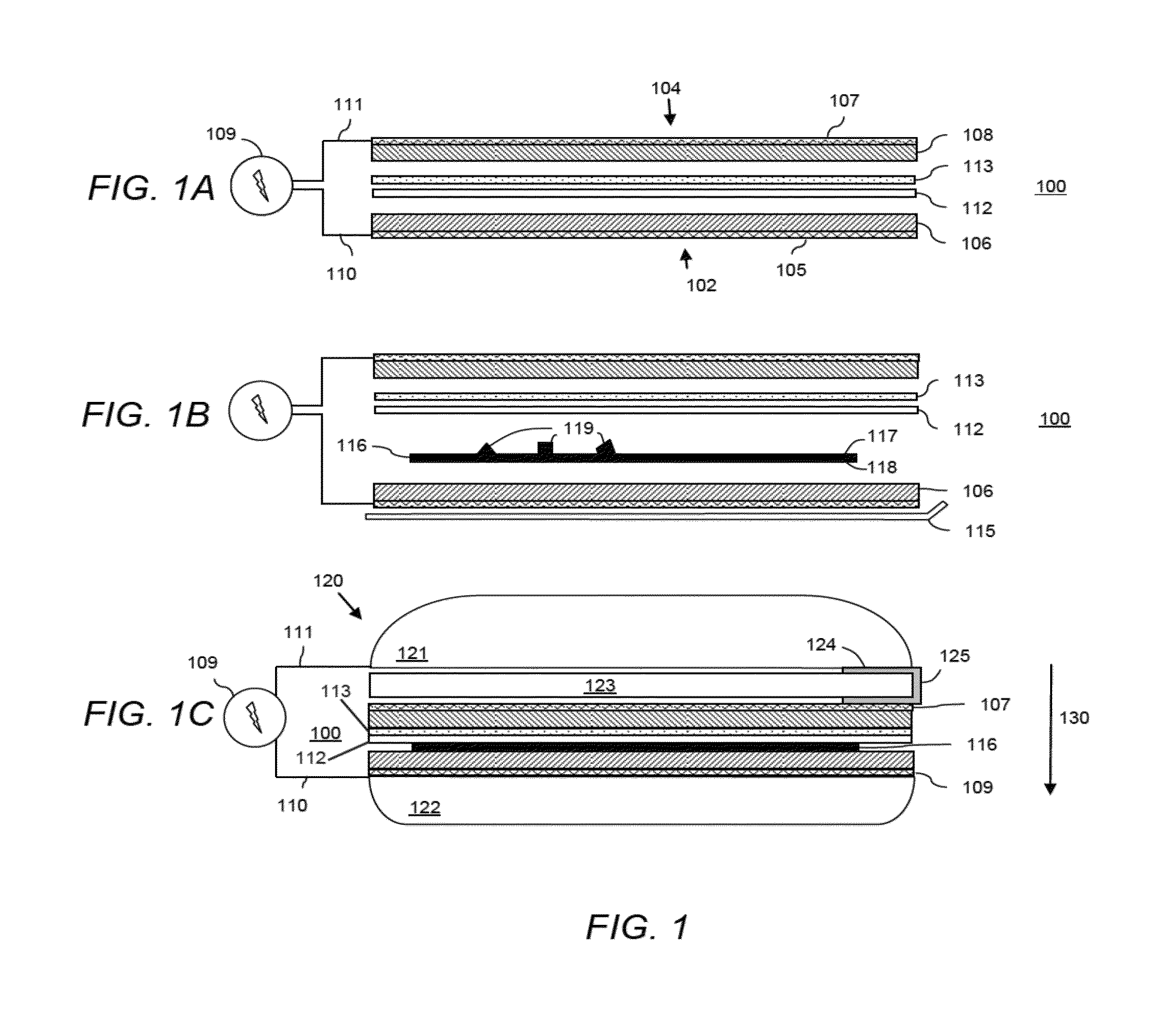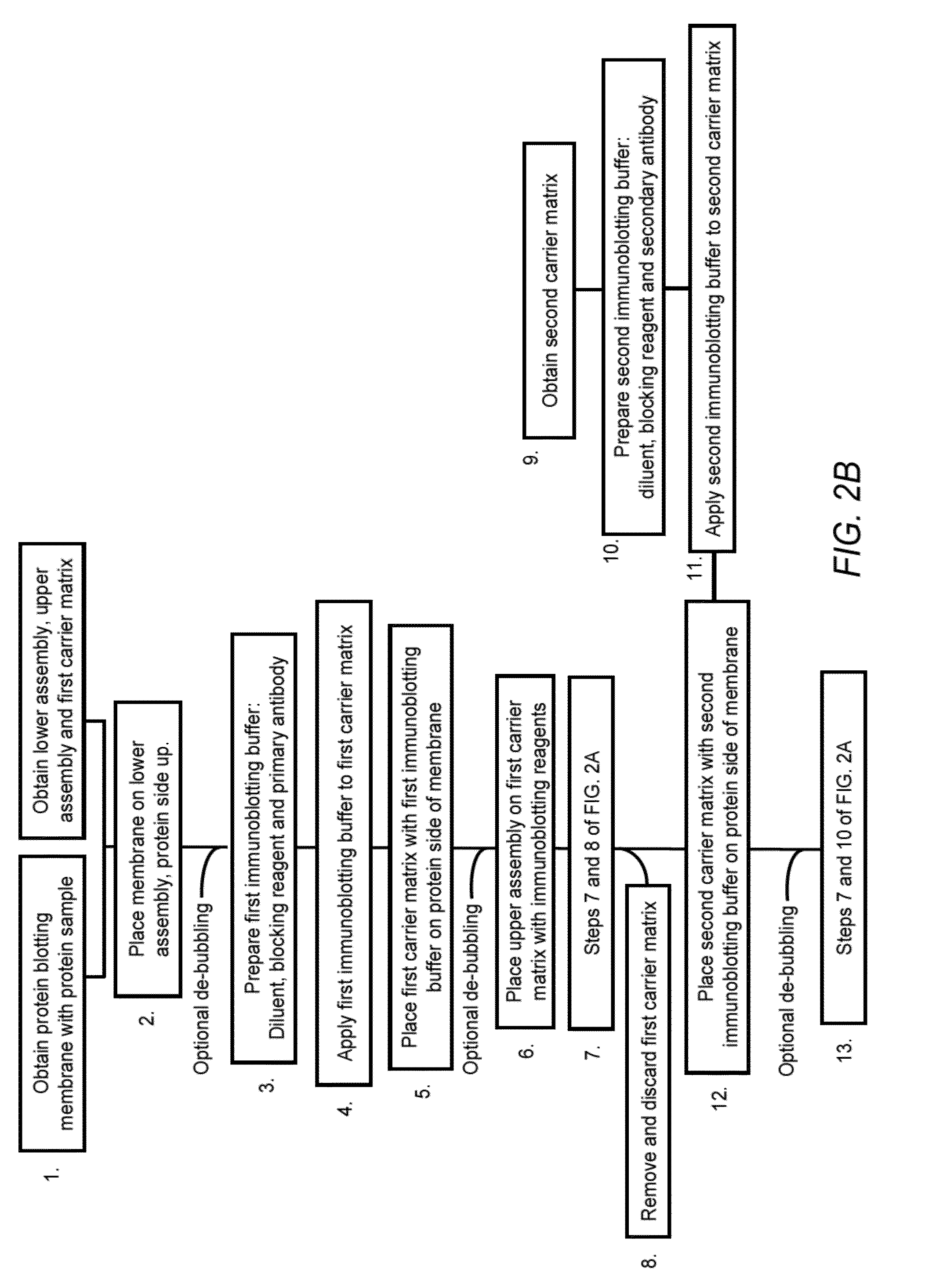Electrophoretically Enhanced Detection of Analytes on a Solid Support
a solid support and electron microscopy technology, applied in the field of immunodetection/nucleic acid blotting, can solve the problems of limited sample size and sensitivity, time now becoming a limiting factor of interest, hybridization assays, etc., and achieve the effect of minimizing irreversible absorption or coupling and rapid absorption
- Summary
- Abstract
- Description
- Claims
- Application Information
AI Technical Summary
Benefits of technology
Problems solved by technology
Method used
Image
Examples
example 1
Several Blotting Reagent Possess an Inherent Negative Charge
[0225]Without being bound by any particular theory or mechanism of action, because the presently described system and method relies in part on the electrophoretic transfer of blotting reagents from a carrier matrix to molecules immobilized on a solid support, reagents (such as, e.g., primary antibodies, secondary antibodies, blocking reagents, and the like), an experiment was performed to demonstrate that such reagents are able to undergo electrophoretic transfer under non-denaturing (i.e., in the absence of SDS) conditions. FIG. 3 is an image demonstrating the inherent negative charge at neutral pH of various reagents used with an electro-blotting detection system according to an embodiment. Samples were resolved on a native 1.2% E-GEL® clear (Invitrogen Corp, Carlsbad, Calif.) and the gel was stained with Coomassie to visualize resolved proteins. Samples are as follows: lane 1, WESTERNBREEZE® Blocking Solution; lane 2, mo...
example 2
Comparison of Conventional Vs. Electro-Blotting Procedures
[0226]FIGS. 4A and 4B show the results obtained after performing a blotting procedure on SW480 cell lysate to detect tubulin and actin according to an embodiment of the presently described electro-blotting system and methods (FIG. 4A) or using conventional blotting techniques (FIG. 4B) or.
[0227]SW-480 cell lysate was obtained commercially from Prosci incorporated, CA. Serial two-fold dilutions of the lysate (2 μg-62 ng; lanes 2-7 of FIGS. 4A and 4B) were resolved along with the indicated volume of MAGICMARK™ molecular weight protein markers (lanes 9-12) on a NUPAGE® Novex 4-12% Bis-Tris Gel (Invitrogen Corp.) according to manufacturer instructions. Resolved proteins were transferred to a Nitrocellulose (NC) protein blotting membrane using the IBLOT™ Dry Blotting System (Invitrogen Corporation, Carlsbad, Calif.) on P3 for 7 minutes or using the NOVEX® semi wet blot module at 30V for 1 hr. The membrane was blocked using the WES...
example 3
[0230]FIGS. 5A-B show the results of an experiment demonstrating that the electrical field has a major contribution to the electro-blotting process, but the pressure has also some additive effect. FIG. 5A shows the results obtained after performing an electro-blotting procedure. The electro-blotting procedure was performed as described above in EXAMPLE 2 for FIG. 4A. FIG. 5B shows the results obtained when the procedure is repeated without running program P5 on the IBLOT™ apparatus.
PUM
| Property | Measurement | Unit |
|---|---|---|
| time | aaaaa | aaaaa |
| length | aaaaa | aaaaa |
| length | aaaaa | aaaaa |
Abstract
Description
Claims
Application Information
 Login to View More
Login to View More - R&D
- Intellectual Property
- Life Sciences
- Materials
- Tech Scout
- Unparalleled Data Quality
- Higher Quality Content
- 60% Fewer Hallucinations
Browse by: Latest US Patents, China's latest patents, Technical Efficacy Thesaurus, Application Domain, Technology Topic, Popular Technical Reports.
© 2025 PatSnap. All rights reserved.Legal|Privacy policy|Modern Slavery Act Transparency Statement|Sitemap|About US| Contact US: help@patsnap.com



